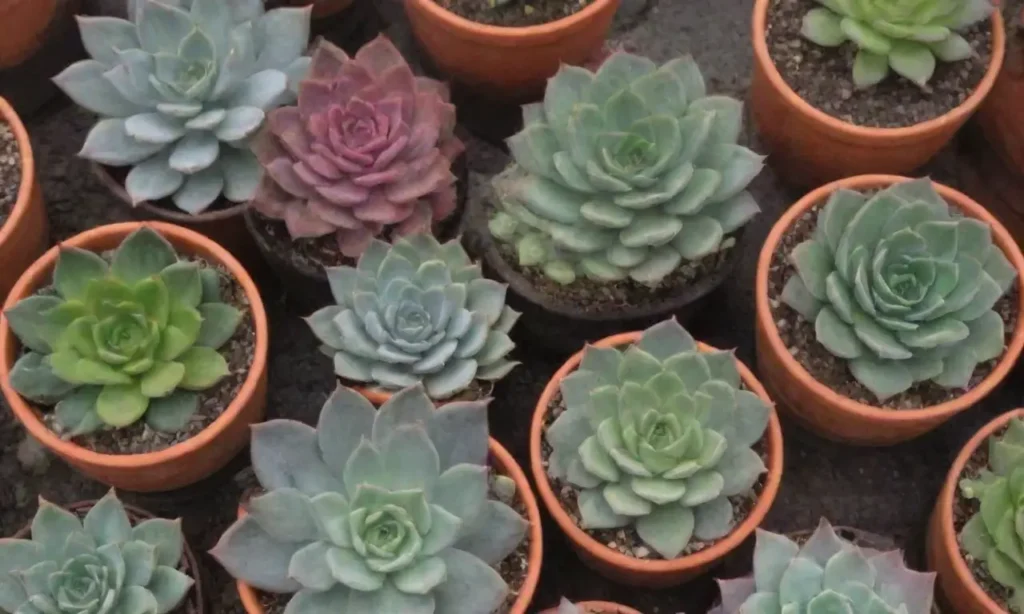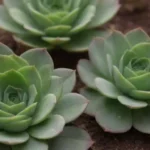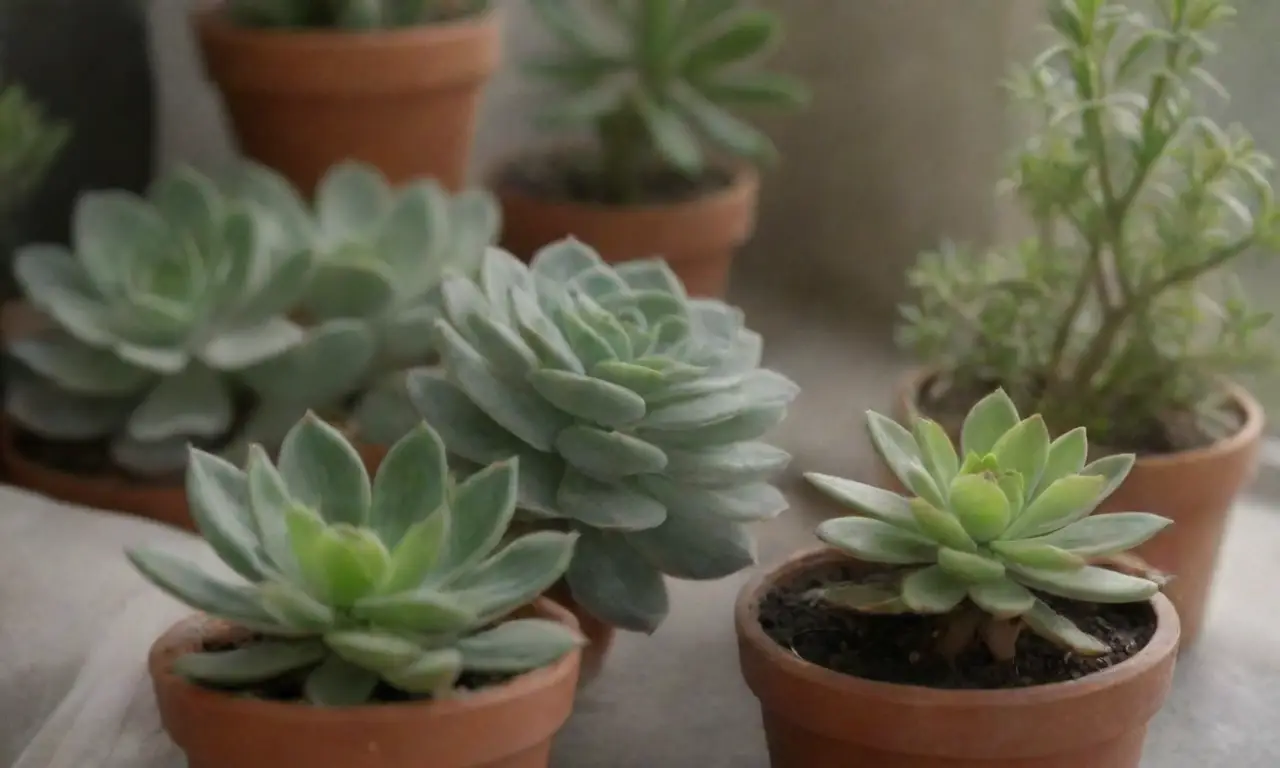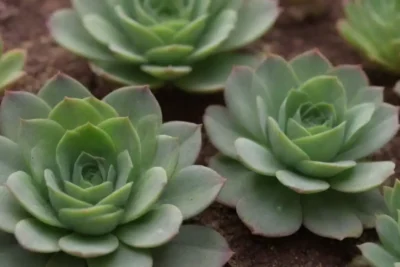
How to Create a Balanced Maintenance Schedule for Your Succulents

Introduction
Succulents are among the most popular houseplants, known for their aesthetic appeal, low maintenance requirements, and variety of shapes and sizes. These unique plants excel in areas where many other plants struggle, making them an attractive choice for both novice and experienced gardeners alike. However, their popularity doesn't mean they are maintenance-free. To ensure your succulent garden flourishes, it is essential to establish a balanced maintenance schedule that caters to their specific needs.
In this article, we will explore the various aspects of creating a balanced maintenance schedule specifically tailored for your succulents. We will discuss the ideal watering frequencies, light requirements, soil conditions, and fertilization schedules. By the end, you will be equipped with the knowledge to keep your succulents thriving and healthy throughout the year.
Understanding Succulent Needs
Before you can create an effective maintenance schedule for your succulents, it is essential to understand the unique needs of these plants. Succulents are defined by their specialized tissues that store water, enabling them to survive in dry environments. However, this resilience can be tricky; too much water can lead to root rot, while not enough can cause them to shrivel.
Watering Practices
Watering is arguably the most crucial element of succulent care. Due to their ability to store water, succulents do not need to be watered as frequently as traditional houseplants. It's vital to understand the environment in which your succulents are growing, as factors like temperature, humidity, and pot size all influence how often they need water. Generally, succulents thrive on a “soak and dry” schedule. This means you should thoroughly water your plants until excess moisture drains from the bottom of the pot and then allow the soil to dry out completely before watering again.
A good rule of thumb is to check your plants once a week during the growing season (spring and summer). Pay attention to the top 2-3 inches of soil; if it feels dry, it's time for watering. Conversely, during the dormant months (fall and winter), reduce watering frequency to once every 2-3 weeks, depending on your local climate. Remember, overwatering is a common mistake; always err on the side of caution.
Light Requirements
Light is another vital component to consider when developing a maintenance schedule. Most succulents thrive in bright, indirect sunlight. Too little light can lead to etiolation, where the plant stretches out and loses its compactness, resulting in an unattractive appearance. Conversely, too much direct sunlight can scorch their leaves. Understanding your specific succulent type will help you determine the right light conditions.
If your succulents are indoors, placing them near a south-facing window is typically ideal, as they can receive plenty of light without being overexposed to harsh rays. Outdoors, it may be necessary to find a semi-shaded area, especially in regions with extremely high temperatures. Pay attention to any signs of distress in your plants; if they start to change color, get leggy, or their leaves begin to drop, it may indicate that their lighting conditions need adjustment.
 The Science Behind Succulent Growth: Knowledge for Better Care
The Science Behind Succulent Growth: Knowledge for Better CareSoil Conditions
The type of soil you use is equally important in maintaining a balanced schedule. Succulents prefer a well-draining soil mix to prevent water from pooling at the roots. A standard potting mix often retains too much moisture, which can be detrimental to your plant's health. You can either purchase specialized cactus and succulent soil or create a homemade mix by combining standard potting soil with perlite or sand to improve drainage.
When repotting your succulents—an essential part of their maintenance schedule, ideally done every 1-2 years—be sure to allow for sufficient drainage by including a layer of gravel or pebbles at the bottom of the pot. This not only promotes better airflow around the roots but also prevents waterlogging, which could compromise your plants.
Fertilization and Nutrient Needs
While succulents do not require frequent fertilization, they can benefit from the right nutrients at certain times of the year. In general, a balanced maintenance schedule would include fertilizing your succulents during their active growing season, typically from spring through early summer.
Choosing the Right Fertilizer
For optimal growth, choose a fertilizer specifically designed for cacti and succulents, as they contain the necessary macronutrients in appropriate proportions. A diluted liquid fertilizer can be administered once a month during the growing season. Always follow the manufacturer's instructions to avoid over-fertilizing, which can cause more harm than good to your plants. Over-fertilization may lead to salt build-up, affecting their health and forcing you to take corrective action.
Seasonal Adjustments
As your succulents enter the dormant season (late summer and fall), it’s wise to halt fertilization altogether. This will mimic the natural rhythms of their native environments, where nutrients are scarce during the colder months. Doing so will also prevent any potential nutrient overdose that can negatively impact the plants during this less active growth period. Instead, focus on maintaining their watering schedule and ensuring they receive adequate light.
Seasonal Care Adjustments

With a balanced maintenance schedule established, it’s important to recognize that seasonal changes may require you to make adjustments in your care routine.
 Balancing Watering Needs for Tropical vs. Desert Succulents
Balancing Watering Needs for Tropical vs. Desert SucculentsAdjusting to Temperature Changes
During winter, as temperatures drop, succulents will need modified care. Lower humidity and cooler temperatures can lead to drying out of the soil faster than in warm months. Monitor them closely to ensure that they do not remain exposed to freezing temperatures, as this can damage or even kill your succulent. If your succulents are housed outdoors, consider bringing them inside during cold spells.
Conversely, when the growing season approaches, increase the frequency of watering and ensure they receive enough light to foster healthy growth. You may also notice rapid growth and the need for repotting as your succulents mature during these months.
Inspecting for Pests
Seasonal transitions can also bring about pest infestations, another aspect of your maintenance schedule that requires attention. Check your succulents periodically for signs of pests like mealybugs, aphids, or fungus gnats, which can thrive in warmer conditions. Should you notice any infestations, promptly use insecticidal soap or neem oil to eliminate these unwanted visitors.
Maintaining a clean environment around your succulents will also promote their health. Remove dead leaves and debris regularly to prevent any potential pest harboring places.
Conclusion
Developing a balanced maintenance schedule for your succulents is not just about following basic guidelines; it's about developing a deeper understanding of these incredible plants and their unique needs. By paying attention to watering, lighting, soil conditions, fertilization, and seasonal adjustments, you can help your succulents thrive in any environment. Remember that every plant is different, and individual care may vary based on specific needs and conditions.
Additionally, the joy of caring for succulents extends beyond the aesthetics; nurturing these resilient plants can be incredibly rewarding. Watching them grow, flourish, and even propagate can create a deeper appreciation for nature's miraculous process.
Ultimately, the key to a thriving succulent garden lies in observation. By routinely checking on your plants, you can gain insights into their health and behavior, allowing you to fine-tune your maintenance schedule as needed. With patience, attention, and a bit of practice, you will become proficient in succulent care and create an enchanting green space in your home. Happy gardening!
 How to Adjust Succulent Care for Urban Environments and Settings
How to Adjust Succulent Care for Urban Environments and SettingsIf you want to read more articles similar to How to Create a Balanced Maintenance Schedule for Your Succulents, you can visit the Maintenance Routine category.


You Must Read